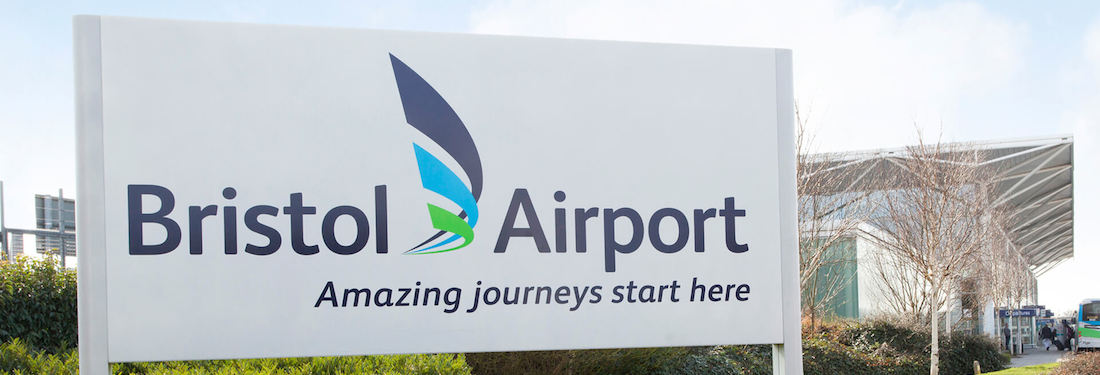Bristol Airport’s new flow management solution provides a seamless and detailed picture of how their passengers move through and use the airport. The information gives the airport added value, unlocks new business opportunities and improves services.
In 2016, passenger numbers exceeded seven million for the first time in Bristol Airport´s history. To help obtain an in-depth cohesive view of passengers’ movement patterns, guide daily and long-term operational and business decisions, and drive greater profitability and passenger satisfaction as this number continues to rise, the airport last year implemented an all-encompassing passenger flow measurement and analysis platform named BlipTrack.

The high-tech solution provides Bristol, which is one of the UK´s fastest growing airports, with a cohesive, wide-ranging view of passenger movements from carpark entrance to gate – and gate to carpark exit.
It presents the airport with a unique opportunity to get ahead of traffic and passenger flow issues before they happen, and to more effectively plan resources in and around the airport, as well as provide retailers in the concession areas with better information to help increase their revenue.
“We wanted to introduce a state-of-the-art technical solution to the challenges airports face in improving customer flow management in the terminal,” says Paul Davies, Operations Director at Bristol Airport. “We had very high expectations prior to the introduction of the system, and I am very happy to say that the outcome has proved very successful. The system has capabilities of further enhancements, which will provide other long-term solutions in the future.”
Numerous other international hubs, including Amsterdam Schiphol, Auckland and Billund airports, are following suit. The operators understand that to improve individual areas of operations, it is important that passengers´ journeys are seen as one process, rather than as a string of isolated events. Understanding that all individual events influence each other is key to unlocking potential gains. These airports have recognised that comprehensive passenger flow data is indispensable for guiding physical expansion plans, and for streamlining operations to accommodate rapid passenger volume growth.

As the solution enables the airport to measure and identify flow patterns throughout the entire airport, it allows them to see the impact of the various actions they implement. With improved operational efficiency and more streamlined check-in and security processes, passengers at Bristol Airport will not only enjoy a faster and more pleasant transit experience, but inevitably also spend more time in the concession areas, giving the airport’s retailers the opportunity to maximise non-aviation revenue.
“Before we installed the BlipTrack solution, we were reliant on our control centre staff to detect queues, using CCTV cameras,” said Phil Holder, Head of Operations Support at Bristol Airport. “This approach was very time-consuming and was only carried out at certain times of the day. Now we have coverage at our fingertips 24 hours a day, 7 days a week. We can now record information more consistently, enabling us to use service level agreements more fairly—not just over selected periods. In addition, as the solution collects data in real-time, it provides early warning if congestion occurs. This rapid information allows us to take fast, proactive measures before the situation escalates, such as opening up additional lines, reducing the risk of bottlenecks and frustrated passengers.”
Live Wait Time Information to Ease Passengers´ Minds
Holder also mentions the benefits of displaying wait-time information, saying that by displaying the length of time passengers could expect to be in the queue, their minds are set at ease, reducing their stress, as they are automatically reassured that there is no issue with this part of their ongoing journey.
Using Flow Data to Boost Non-aviation Revenue
“We will have a view of stacked passenger dwell times for each of the airport areas, from all carpark entries right through to the boarding gates and immigration. The data will help indicate which processes we need to improve, for instance the number and frequency of car park buses. We can measure when passengers arrive and how long it takes them to get to the terminal, which will help us plan bus timetables. By linking it to the boarding gates, we will have a good idea of what time passengers travelling to different destinations choose to turn up at the airport. It will also enable us to evaluate whether there is a need to increase the throughput in security, if airside concession dwell time is low,” ends Phil Holder.
Bristol Airport can retrieve both live and empirical metrics about queue wait times in its processes, and specific flow patterns, such as walking routes, entrance and exit usage, and time spent in specific areas, such as carpark, check-in, security, lounges, gates, immigration and more. Patterns can be averaged over a day, week, month, a specific time of day, holidays, or a range of other metrics. Ultimately, this enhances the understanding of how disruptions or changes affect standard behaviour, and helps the airport to optimise their operations in areas of interest.
Besides Bristol Airport, the solution has also been adopted by other UK airports: Birmingham, Manchester and Edinburgh. And internationally, more than 25 international airports are reaping the benefits of this Danish-developed technology, including JFK Airport in New York, Dublin, Copenhagen, Milano, Oslo, Geneva, Brussels, Cincinnati and Keflavik.
Source – AeroTime


